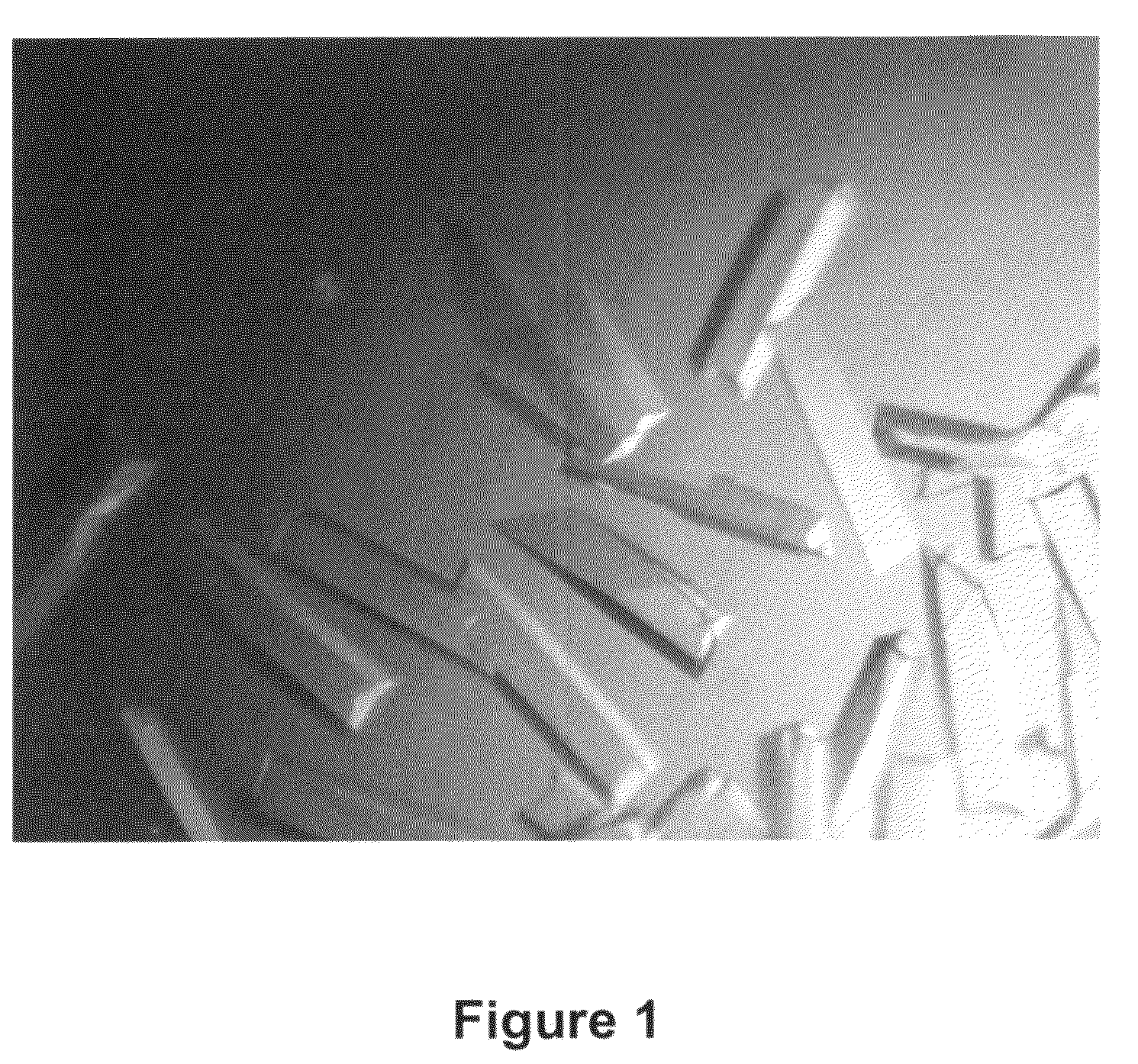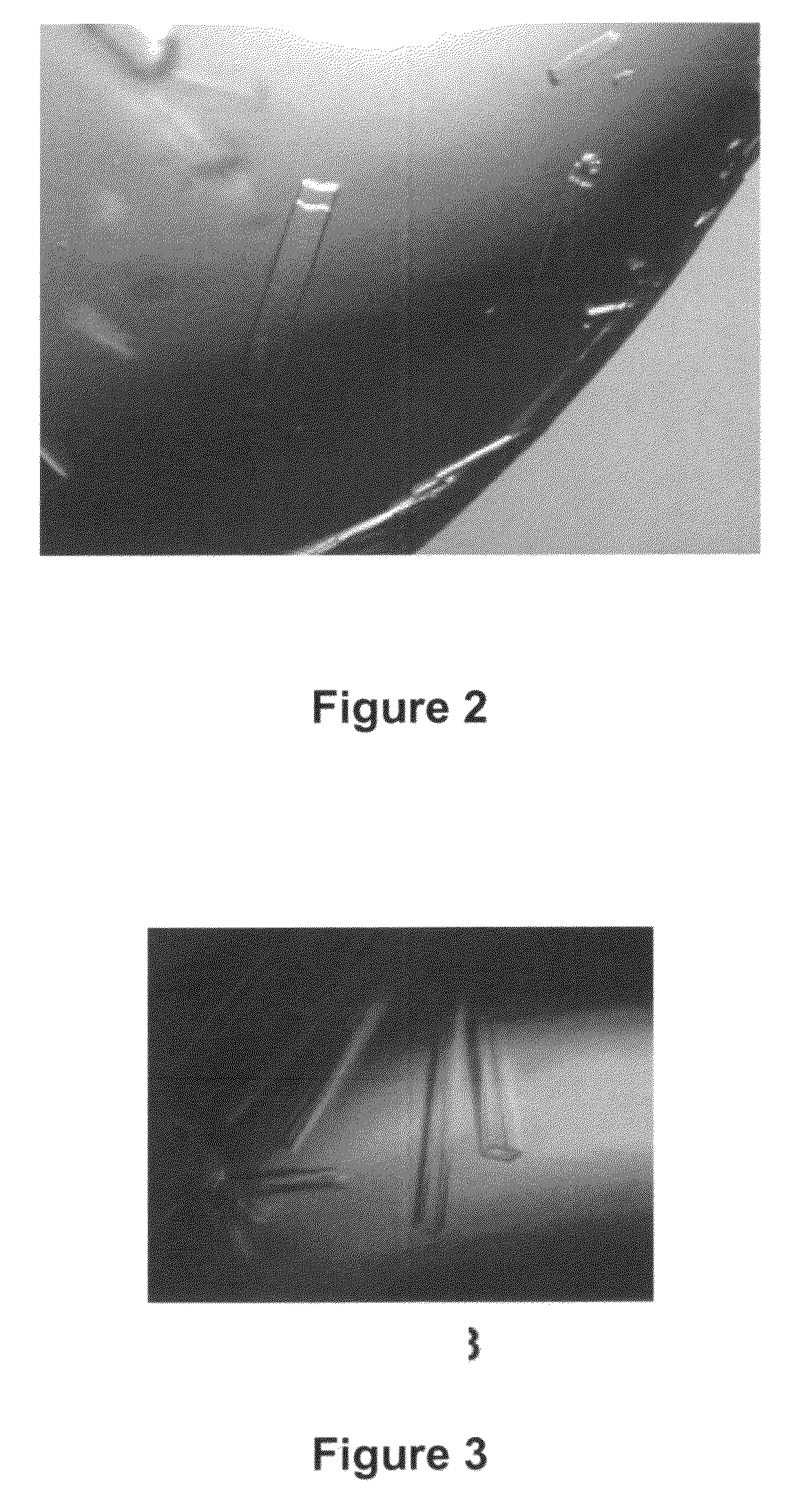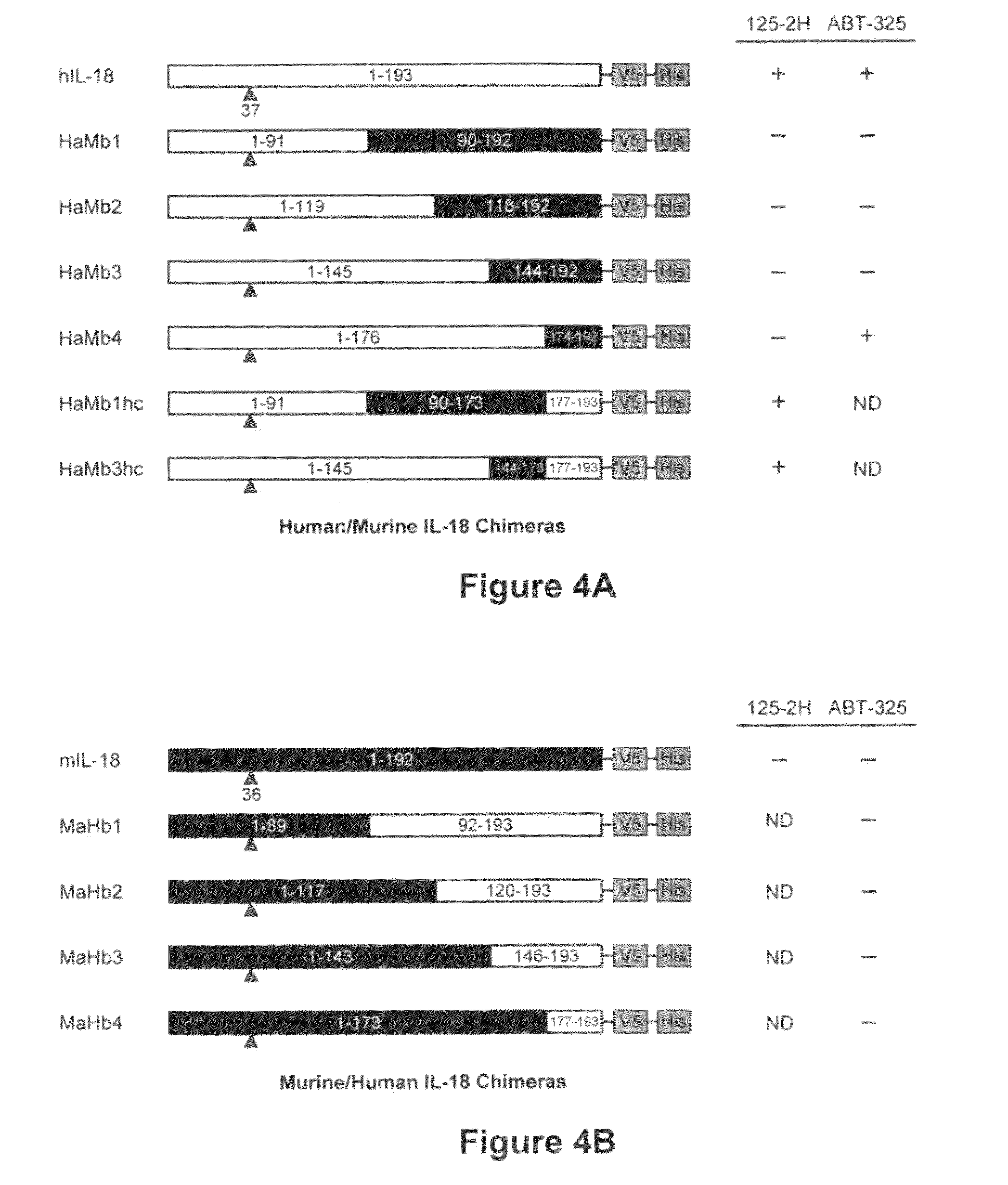Compositions and methods for crystallizing antibody fragments
a technology of antibody fragments and crystallization methods, which is applied in the field of crystallizing antiinterleukin 18, can solve the problems of preventing compliance with safety and stability requirements, affecting the syringeability of mab molecules, and increasing the tendency of mab molecules to aggregate exponentially with increasing concentration
- Summary
- Abstract
- Description
- Claims
- Application Information
AI Technical Summary
Benefits of technology
Problems solved by technology
Method used
Image
Examples
example 1
Protein Expression and Purification
[0178]Human IL-18. Recombinant human pro-IL-18, in which the five cysteine residues at positions 10, 74, 104, 112, and 163 were mutated to alanine (“pro-IL-18-5C→A”, hereafter simply pro-IL-18; following UniProt Entry Q14116, mature IL-18 comprises residues 37-193), was expressed with an amino-terminal (His)6 affinity purification tag followed by a tobacco etch virus (TEV) protease cleavage peptide in E. coli BL21 cells. Expression and purification of this mutant IL-18 was greatly simplified, compared to the wildtype protein, likely due to inhibition of polymerizing oxidation of surface-exposed residues Cys-74 and Cys-104. The following procedure was carried out at 4° C. unless specified otherwise. Cells from a 1 liter culture (stored frozen at −80° C.) were thawed, resuspended in 25 mL of Buffer A (1×PBS (150 mM NaCl, 10 mM NaPO4, pH 7.2 [NaH2PO4 solution in which the pH was adjusted to 7.2 using NaOH]), 1 “protease tab” (EDTA-free complete protea...
example 2
Crystallization of 125-2H Fab
[0182]Frozen 125-2H Fab stock (˜13 mg / mL) was thawed on ice. The Fab (2 μL) was mixed with 2 μL of a reservoir solution consisting of 10% polyethyleneglycol (PEG) 6000, 100 mM HEPES, pH 7.5, 5% 2,4-methylpentanediol, and suspended over the reservoir (siliconized glass cover slip) at 4° C. Rod-like crystals appeared within one day. Crystals of the 125-2H Fab were harvested in mother liquor+25% glycerol. Crystals were then flash-cooled by plunging into liquid nitrogen and stored in a liquid nitrogen refrigerator.
example 3
Crystallization of ABT-325 Fab
[0183]Frozen ABT-325 Fab stock (˜20 mg / mL) was thawed on ice. The Fab (2 μL) was mixed with 2 μL of a reservoir solution consisting of 25-30% polyethyleneglycol (PEG) 400, 100 mM CAPS, pH 10.5 and suspended over the reservoir at 4° C. Rod-like crystals appeared within one day. Crystals of the ABT-325 Fab were harvested directly from their mother liquor using a fiber loop. Crystals were then flash-cooled by plunging into liquid nitrogen and stored in a liquid nitrogen refrigerator.
PUM
| Property | Measurement | Unit |
|---|---|---|
| pH | aaaaa | aaaaa |
| volume | aaaaa | aaaaa |
| volume | aaaaa | aaaaa |
Abstract
Description
Claims
Application Information
 Login to View More
Login to View More - R&D
- Intellectual Property
- Life Sciences
- Materials
- Tech Scout
- Unparalleled Data Quality
- Higher Quality Content
- 60% Fewer Hallucinations
Browse by: Latest US Patents, China's latest patents, Technical Efficacy Thesaurus, Application Domain, Technology Topic, Popular Technical Reports.
© 2025 PatSnap. All rights reserved.Legal|Privacy policy|Modern Slavery Act Transparency Statement|Sitemap|About US| Contact US: help@patsnap.com



